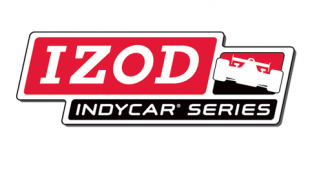Pit rules under caution change beginning at Long Beach
IndyCar News/Releases, INDYCAR PR — By More Front Wing Staff on April 9, 2012 10:18 pm[Source: INDYCAR press release]
*
Pit road will be open from the outset of non-emergency full-course cautions on road and street courses, potentially cutting the number of laps under yellow, INDYCAR president of competition Beaux Barfield announced.
The procedure begins at the Toyota Grand Prix of Long Beach on April 15 and will be employed for the remainder of the IZOD IndyCar Series season. Also beginning at the 38th annual race on the 1.968-mile, 11-turn temporary street circuit, lapped traffic will move to the rear of the field during any restarts in the final 20 laps of road/street course events.
“The pits have historically been closed during full-course yellows to make sure that not only the field is under control but in order before opening the pits,” said Barfield, the IZOD IndyCar Series Race Director. “As such, it leads to this rush when all 26 cars come in at the same time. It can be exciting but it definitely is a contributing factor to some of the pit lane issues that we’ve had in the recent past.”
Barfield has previewed the procedural alteration in non-emergency situations, such as a car off course, in the first two IZOD IndyCar Series races of the season. Only one incidence of contact (a single car into the tires) has necessitated a full-course yellow in the events on the temporary street circuit at St. Petersburg, Fla., and the Barber Motorsports Park road course.
“I’ve delayed the call of the full-course yellows during the first few races, being cognizant of where the leader is and the possibility of disadvantaging the leader and other cars in the field that have legitimate gaps over the cars behind them if that yellow is too early,” he said. “First and foremost it can only be called in a non-emergency situation when the driver is not in immediate danger so you can wait a half a lap to make sure you’ve given everybody a chance to pit before you call the full-course yellow.
“A pits open full-course yellow would be similar so you give the leader the first chance to pit when you’ve made the announcement. It probably puts slightly less emphasis on pit work or allows people to maintain that advantage where they might be able to make more adjustments in the pits.”
The safety car will be dispatched to pick up the next competitor – either one that remains on the track or comes out of the pits – until the restart.
“It keeps the field organized in such a way that there’s no reorder when we go back to green, and it potentially shortens the yellows,” Barfield continued. “Now we’re not going full-course yellow, waiting a lap to gather the cars and there’s less chance for wave-arounds at the end.
“Considering we’ve had three- and four-lap yellows already this year, which I’m happy with, this will allow for yellows as short as two laps.”
Cars that are not on the lead lap during an upcoming restart in the final 20 laps will peel off and drive through pit lane on the speed limiter and cycle back to the end of the line.
“That keeps everybody up front racing for position and keeps the race interesting to the end,” Barfield said.
Tags: Verizon IndyCar Series - Administration








Not sure how I feel about reordering the field during the last 20 laps. My first thought is to do it throughout the race or don’t do it all. Why run most of the race with one rule, then change it for the last 20 laps?